Stocks extended their gains on Thursday as the S&P 500 moved within spitting distance of its 2007 high. Small-caps led the way as the Russell 2000 ETF (IWM) surged 1%. All sectors were up, but their gains were muted. The Energy SPDR (XLE) was the only sector SPDR to advance more than 1% (+1.37%). Homebuilders continued their run as the Home Construction iShares (ITB) broke to a new high for the year. The Retail SPDR (XRT) and the Regional Bank SPDR (KRE) also hit new highs. It is a classic case of stocks becoming overbought and remaining overbought. This is what happens in strong uptrends. There will be a correction one day, but picking a top in this environment is a dangerous game. The PerfChart below shows relative performance for four index ETFs and three industry group ETFs. All our outperforming the S&P 500 year-to-date. The Nasdaq 100 Equal-Weight ETF (QQEW) is the least strong of the group. Notice that homebuilders, retailers and regional banks are the leaders this year.
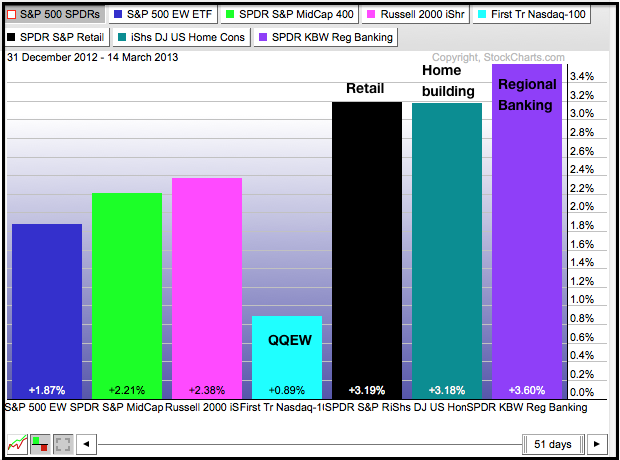

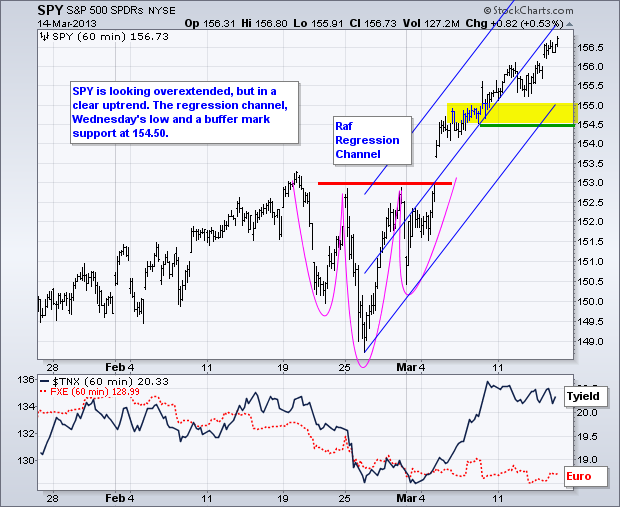
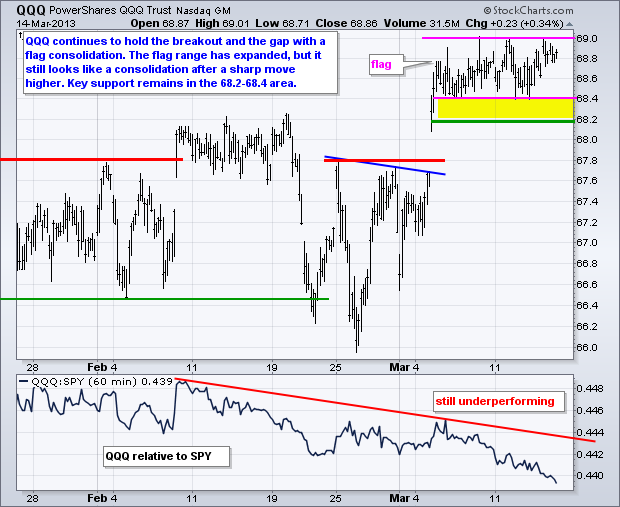
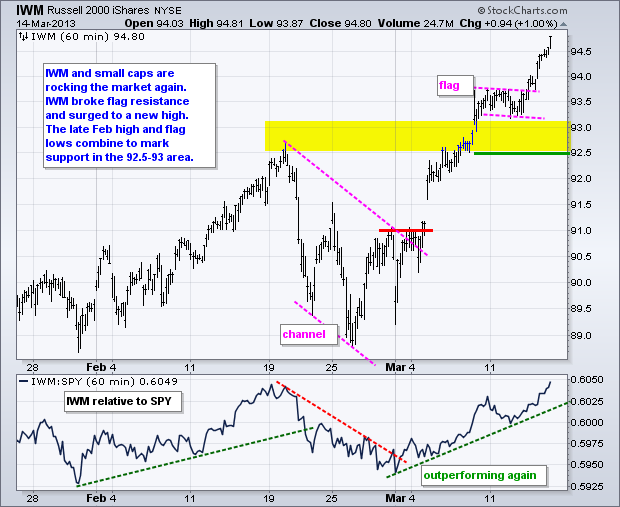
**************************************************************************
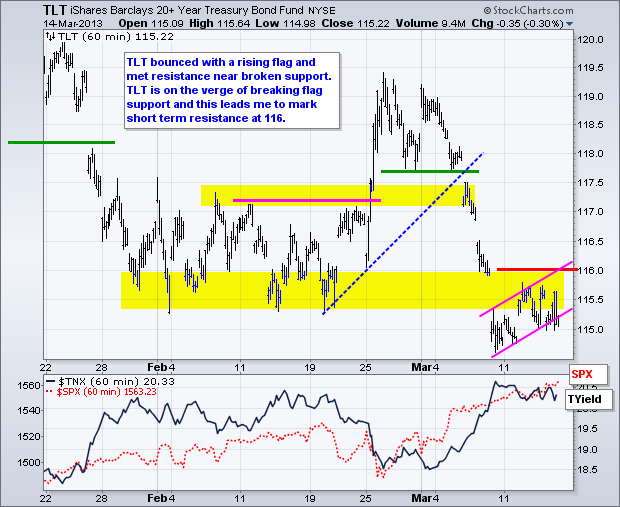
**************************************************************************
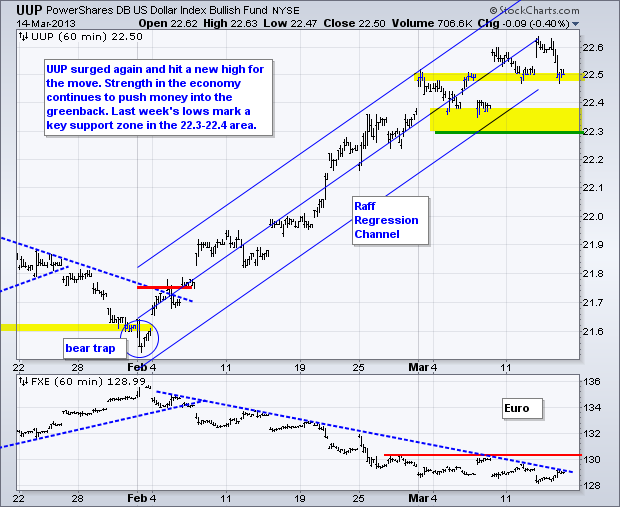
**************************************************************************
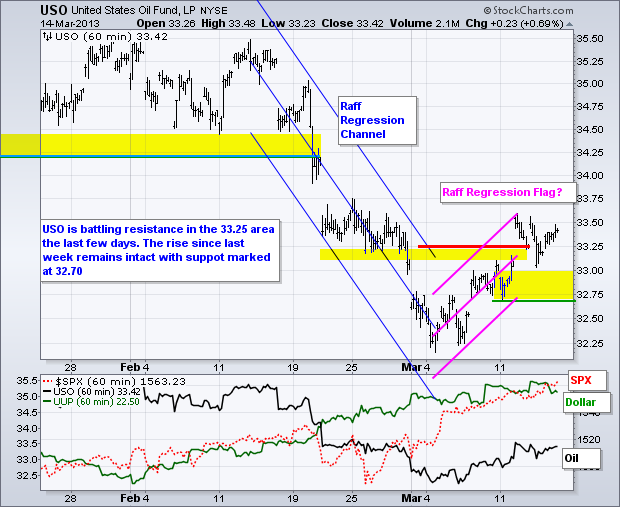
**************************************************************************
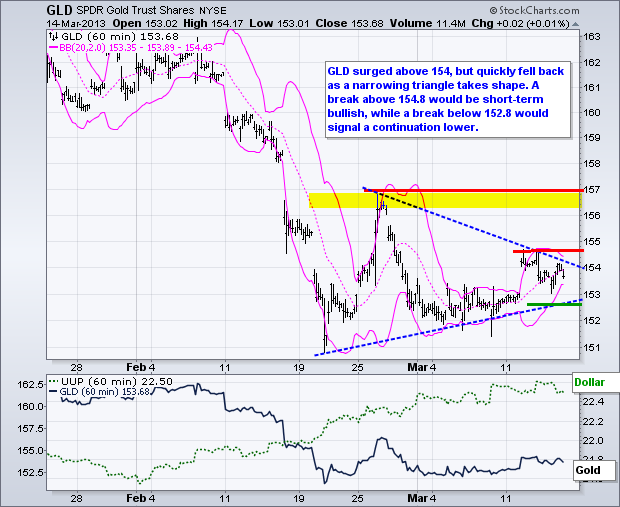
**************************************************************************
Key Reports and Events (all times Eastern):
Fri - Mar 15 - 08:30 – Consumer Price Index (CPI)
Fri - Mar 15 - 08:30 - Empire State Manufacturing
Fri - Mar 15 - 09:15 - Industrial Production/Capacity Utilization
Fri - Mar 15 - 09:55 - Michigan Sentiment
Fri - Mar 17 – 12:00 – Erin go Bragh!
Wed – Mar 27 - 23:59 – Government Shut Down Deadline
Wed – May 15 - 23:59 – Debt Ceiling Deadline
Charts of Interest: Tuesday and Thursday
This commentary and charts-of-interest are designed to stimulate thinking. This analysis is
not a recommendation to buy, sell, hold or sell short any security (stock ETF or otherwise).
We all need to think for ourselves when it comes to trading our own accounts. First, it is
the only way to really learn. Second, we are the only ones responsible for our decisions.
Think of these charts as food for further analysis. Before making a trade, it is important
to have a plan. Plan the trade and trade the plan. Among other things, this includes setting
a trigger level, a target area and a stop-loss level. It is also important to plan for three
possible price movements: advance, decline or sideways. Have a plan for all three scenarios
BEFORE making the trade. Consider possible holding times. And finally, look at overall market
conditions and sector/industry performance.

About the author:
Arthur Hill, CMT, is the Chief Technical Strategist at TrendInvestorPro.com. Focusing predominantly on US equities and ETFs, his systematic approach of identifying trend, finding signals within the trend, and setting key price levels has made him an esteemed market technician. Arthur has written articles for numerous financial publications including Barrons and Stocks & Commodities Magazine. In addition to his Chartered Market Technician (CMT) designation, he holds an MBA from the Cass Business School at City University in London.
Learn More





